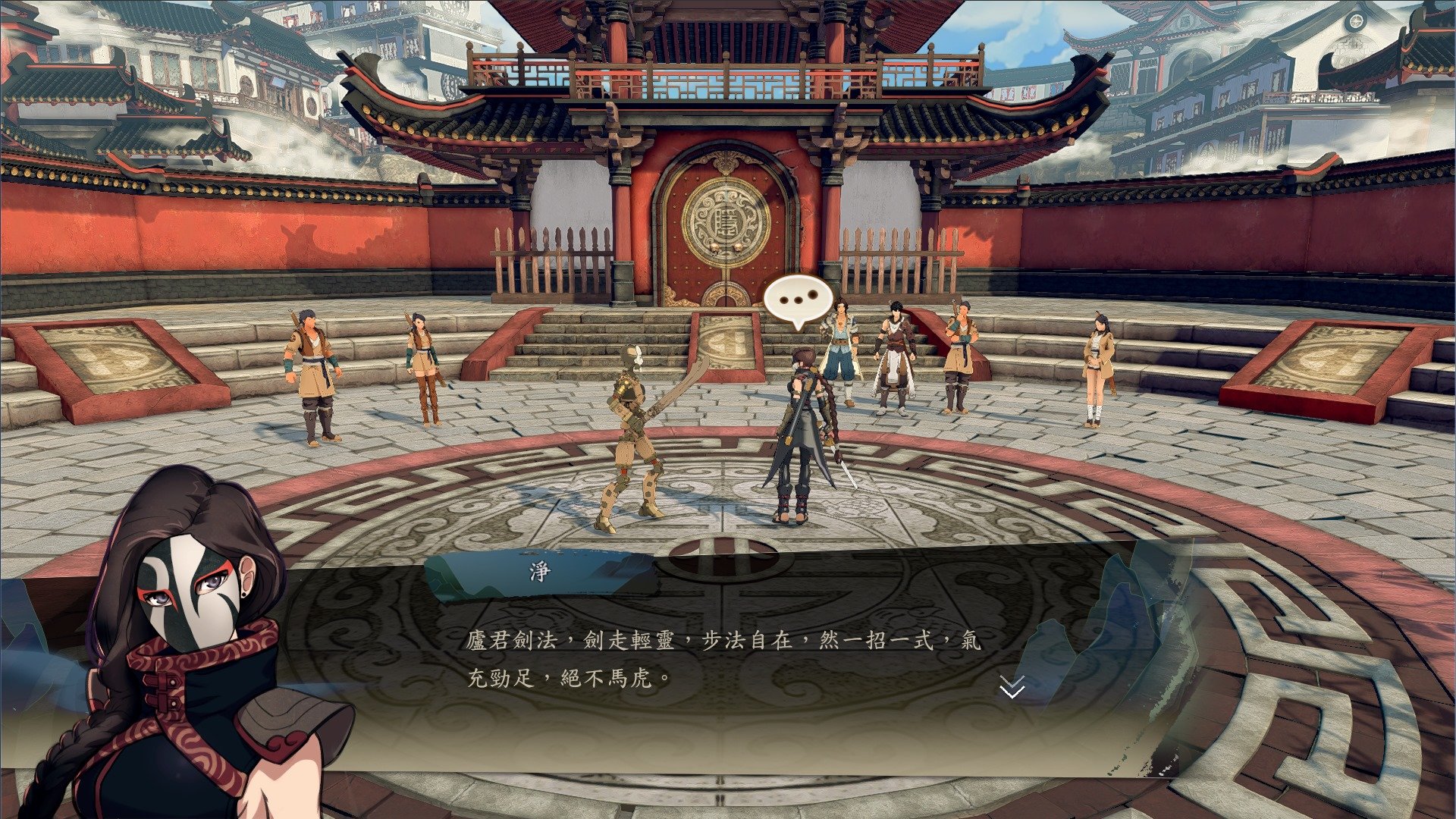- Joined
- Jan 28, 2011
- Messages
- 99,576















Tags: Heluo Studio; Tale of Wuxia
All right, that's enough JRPGs on the Codex front page. It's time for a CRPG. By which I mean a Chinese RPG of course. I've never heard of Tale of Wuxia before, but it must be good if Darth Roxor decided to just randomly review it out of the blue. Indeed, he considers it to have one of the best character systems he's ever seen in an RPG. So read on, gweilos:
Read the full article: RPG Codex Review: Tale of Wuxia
All right, that's enough JRPGs on the Codex front page. It's time for a CRPG. By which I mean a Chinese RPG of course. I've never heard of Tale of Wuxia before, but it must be good if Darth Roxor decided to just randomly review it out of the blue. Indeed, he considers it to have one of the best character systems he's ever seen in an RPG. So read on, gweilos:
Tale of Wuxia’s main tagline is that it “has been dedicated to providing gameplayers with a player-defined platform, where they can customize their own Wuxia” (“Wuxia” is Chinese for “martial hero”), so as you may imagine, character building is an important part of this game.
And what a platform for character building it is! When you look at the system at first, you might get suspicious, because it has all the elements that don’t work in most other games, and which lend themselves to a great many trap builds. I’m talking of course about the multitude of statistics (there are around 40 things to raise), and the fact that seemingly useless things (“tea-making”, “calligraphy”) are coupled with what looks like obviously superior options (combat stats). In another game, you’d identify the dump stats, pump your sword skill to maximum and set sail to victory.
This is not at all the case in Tale of Wuxia. Here, all the statistics, from floriculture to martial arts, are useful to some degree, for a number of reasons. For starters, most combat styles in the game scale off two abilities – a primary combat skill and a secondary skill. For example, there’s a Taoist sword-fighting style, whose effectiveness is influenced by your skill in calligraphy. Similarly, a throwing weapon style will need high chess-playing. A zither (yes, the musical instrument) fighting style requires a high score in music. So on and so forth.
Also, a word on how the styles actually work. Apart from being influenced by a primary weapon skill and a secondary support skill, they usually give you a set of three unique moves in combat, though the most basic ones may be limited to two moves. All the moves require energy (mana, more or less) to perform, while the higher-tier abilities are only unlocked when you reach enough proficiency in a given style, and they also go on cooldown when used. Switching between styles in combat is possible, but it puts all the better abilities on cooldown, so effective switching requires a modicum of planning to pull off. The move sets are all clearly focused on a specific purpose, and the abilities often work best in combos. To follow the example of the Taoist sword style – the first, basic attack gives you a mana shield, the second move buffs you with vampirism (leeching both health and energy from damaged enemies), and the third is an area-wide slash that ignores armour. Proper combination of the three can leave you almost unkillable.
The versatility and flexibility when it comes to the combinations of skills and fighting styles gives tremendous freedom and breadth to the character system. The ways of building your wuxia are numerous, and you might switch between different styles many times throughout the course of the game – whether it’s because a new one you’ve just unlocked is more powerful than what you had before, or because you got bored of the old one and want to try something different.
Furthermore, raising various skills to high levels often gives you various long-term boons. These might be unlockable choices in adventures, skill check opportunities, or entirely unique events that are triggered only at certain skill thresholds.
There’s also a nice synergy between the above aspects, as the events you unlock often serve to let you gain new combat styles, which might not even be related to the skill that triggered a given adventure. Of course, these events will also net you experience, new acquaintances, items and the like.
Another element that ties all these parts together are the “internal arts”. These are basically passive abilities that boost your character’s performance, and their functionalities vary wildly. Some simply give stat bonuses (some of which keep rising the longer combat goes on), but others are more involved, and may give you a poisoning aura, let you move freely through enemy zones of control, periodically remove debuffs, etc.
Obviously the final piece of the puzzle that makes the system whole is equipment. You don’t get to play dress-up too much in Tale of Wuxia, as you can only have three items equipped at a time (a weapon, an armour, an accessory), but the bonuses they provide are still significant. Apart from the obvious features like boosting your attack and defence, your gear will also grant you additional abilities, which are not unlike the internal styles.
When you combine all these parts – stats, combat styles, internal arts and equipment – you can get so many, so different character builds and playstyles, it’s honestly almost overwhelming. You can mould your character into an unbreakable, ever-regenerating bulldozer, an artful dodger, a toxic avenger, a mass-slicer and dicer, Cacofonix, a ranged pinner and kiter, an immortal swordsman, a fan-slapping paralyser… and more. Or combinations thereof. It’s completely crazy, and it’s unlike anything I’ve seen in an RPG.
And what a platform for character building it is! When you look at the system at first, you might get suspicious, because it has all the elements that don’t work in most other games, and which lend themselves to a great many trap builds. I’m talking of course about the multitude of statistics (there are around 40 things to raise), and the fact that seemingly useless things (“tea-making”, “calligraphy”) are coupled with what looks like obviously superior options (combat stats). In another game, you’d identify the dump stats, pump your sword skill to maximum and set sail to victory.
This is not at all the case in Tale of Wuxia. Here, all the statistics, from floriculture to martial arts, are useful to some degree, for a number of reasons. For starters, most combat styles in the game scale off two abilities – a primary combat skill and a secondary skill. For example, there’s a Taoist sword-fighting style, whose effectiveness is influenced by your skill in calligraphy. Similarly, a throwing weapon style will need high chess-playing. A zither (yes, the musical instrument) fighting style requires a high score in music. So on and so forth.
Also, a word on how the styles actually work. Apart from being influenced by a primary weapon skill and a secondary support skill, they usually give you a set of three unique moves in combat, though the most basic ones may be limited to two moves. All the moves require energy (mana, more or less) to perform, while the higher-tier abilities are only unlocked when you reach enough proficiency in a given style, and they also go on cooldown when used. Switching between styles in combat is possible, but it puts all the better abilities on cooldown, so effective switching requires a modicum of planning to pull off. The move sets are all clearly focused on a specific purpose, and the abilities often work best in combos. To follow the example of the Taoist sword style – the first, basic attack gives you a mana shield, the second move buffs you with vampirism (leeching both health and energy from damaged enemies), and the third is an area-wide slash that ignores armour. Proper combination of the three can leave you almost unkillable.
The versatility and flexibility when it comes to the combinations of skills and fighting styles gives tremendous freedom and breadth to the character system. The ways of building your wuxia are numerous, and you might switch between different styles many times throughout the course of the game – whether it’s because a new one you’ve just unlocked is more powerful than what you had before, or because you got bored of the old one and want to try something different.
Furthermore, raising various skills to high levels often gives you various long-term boons. These might be unlockable choices in adventures, skill check opportunities, or entirely unique events that are triggered only at certain skill thresholds.
There’s also a nice synergy between the above aspects, as the events you unlock often serve to let you gain new combat styles, which might not even be related to the skill that triggered a given adventure. Of course, these events will also net you experience, new acquaintances, items and the like.
Another element that ties all these parts together are the “internal arts”. These are basically passive abilities that boost your character’s performance, and their functionalities vary wildly. Some simply give stat bonuses (some of which keep rising the longer combat goes on), but others are more involved, and may give you a poisoning aura, let you move freely through enemy zones of control, periodically remove debuffs, etc.
Obviously the final piece of the puzzle that makes the system whole is equipment. You don’t get to play dress-up too much in Tale of Wuxia, as you can only have three items equipped at a time (a weapon, an armour, an accessory), but the bonuses they provide are still significant. Apart from the obvious features like boosting your attack and defence, your gear will also grant you additional abilities, which are not unlike the internal styles.
When you combine all these parts – stats, combat styles, internal arts and equipment – you can get so many, so different character builds and playstyles, it’s honestly almost overwhelming. You can mould your character into an unbreakable, ever-regenerating bulldozer, an artful dodger, a toxic avenger, a mass-slicer and dicer, Cacofonix, a ranged pinner and kiter, an immortal swordsman, a fan-slapping paralyser… and more. Or combinations thereof. It’s completely crazy, and it’s unlike anything I’ve seen in an RPG.
Read the full article: RPG Codex Review: Tale of Wuxia




















![Glory to Codexia! [2012] Codex 2012](/forums/smiles/campaign_tags/campaign_slushfund2012.png)







